Forensic and analytical science
The Forensic & Analytical Science research group, led by Dr Charlene Greenwood, is a newly formed group within the School of Chemical and Physical Sciences. Research carried out within this group is very diverse, yet all with a very similar theme: Investigative. This is either set in an area of analytical chemistry (identifying biomarkers or creating sensors), or a range of topics directly applicable to Forensic Science (detecting buried items of forensic interest, bone research or estimating postmortem intervals). In all this the use of analytical techniques and an investigative mind is crucial.
A range of techniques is available at Keele for this purpose, including gas chromatography and/or liquid chromatography coupled to a range of mass spectrometers (GCxGC-ToF-MS, LC-QToF-MS, ICP-MS), thermal imaging cameras and X-ray diffraction (XRD).
We also make use of central UK and EU facilities for small-angle neutron and X-ray scattering measurements.
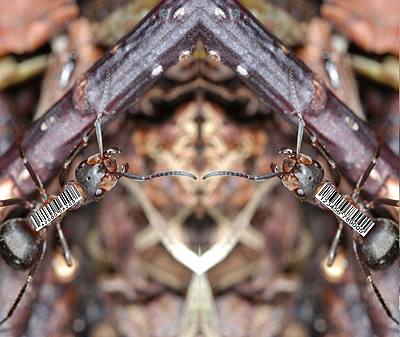 Chemical ecology is the study of the structure, origin and function of naturally occurring chemicals that mediate intraspecific or interspecific interactions. These chemicals are known as semiochemicals.
Chemical ecology is the study of the structure, origin and function of naturally occurring chemicals that mediate intraspecific or interspecific interactions. These chemicals are known as semiochemicals.
Depending on the function of a semiochemical, this group of chemicals can be further divided into three classes: pheromones, kairomones and allomones.
At the heart of the discipline are modern analytical instrumentation, careful observational biology and good bioassay design.
Dr Drijfhout is an expert in chromatography and/or mass spectrometry, both are crucial techniques for elucidating the structure and role of various compounds in (social) insects. Current research topics include:
- the biosynthesis of hydrocarbons as recognition compounds in ants,
- the use of hydrocarbons as age and species identification tools in blowflies,
- the use of metabolites as age markers in blowflies.
The main focus of the research group is value-added fraud. In this type of fraud, a foodstuff is misrepresented to allow it to be sold for a higher price. Using a range of analytical techniques (including LC-MS, GC-MS and ICP-MS), a profile of all of the small molecule data from a foodstuff is built up and differences between groups are identified to determine if fraud has taken place.
Current projects are investigating:
- the differentiation of animals subjected to conventional and religious slaughter methods,
- the effect of meat ageing, and
- differentiation between organic/non-organic eggs.
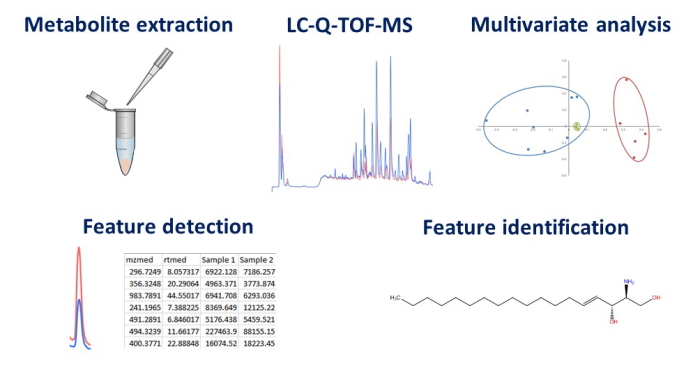
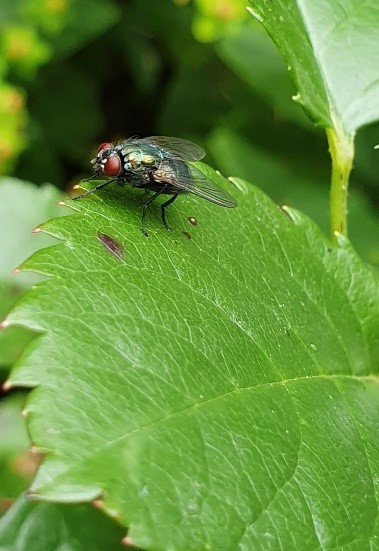 When the cause of death is unknown in a criminal case, establishing the post-mortem interval (PMI) is very important. In basic terms, forensic entomology is the use of insects and their anthropoid relatives that inhabit decomposing remains to aid the legal investigation.
When the cause of death is unknown in a criminal case, establishing the post-mortem interval (PMI) is very important. In basic terms, forensic entomology is the use of insects and their anthropoid relatives that inhabit decomposing remains to aid the legal investigation.
It is becoming more and more important in the last decade and is being used more frequently to determine the PMI when a medical pathologist is unable to do so (+72 hours after death).
However, the area is coming under scrutiny as determining a reliable time of death can be challenging even for the most experienced of forensic entomologists and more scientifically supported research is needed to strengthen the evidence and ensure creditability is restored.
Research in social insects has shown that hydrocarbons found on the cuticle of insects are species-specific as well as caste specific and hence could be a promising tool for establishing the PMI in forensic entomology. In addition, metabolites are also potential good age indicators.
In this research project hydrocarbons/metabolites are extracted from adults, eggs and larvae and analysed using a Gas or Liquid Chromatography-Mass Spectrometer to determine if these hydrocarbons are species and or age-specific.
If they yield different specific profiles for the 6 different life stages this is a much greater method of age identification than the current methods being used.
Another project related to this is the study in which we investigate the influence of legal highs on blowfly development and how this affects PM estimations. Here we observed the hydrocarbon profile of larvae fed on meat spiked with certain legal highs.
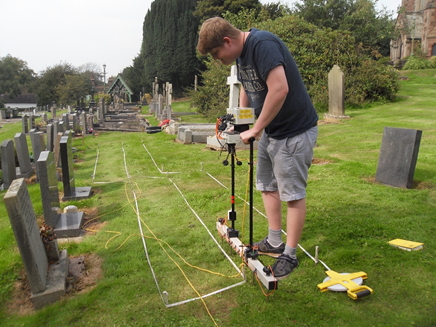 This research group (Drs Jamie Pringle, Kris Wisniewski, Viv Heaton, Ian Stimpson, Charlene Greenwood, George Handley and Glenda Jones) combines expertise from both the CPS and GGE Schools within the Faculty of Natural Sciences. See staff pages for full paper lists.
This research group (Drs Jamie Pringle, Kris Wisniewski, Viv Heaton, Ian Stimpson, Charlene Greenwood, George Handley and Glenda Jones) combines expertise from both the CPS and GGE Schools within the Faculty of Natural Sciences. See staff pages for full paper lists.
Finding items of forensic interest can be difficult, especially if they have been covertly buried to try and escape detection. Keele researchers are trying to assist in a variety of ways. 75% of UK burial grounds are also classified as full, which makes discovering unmarked graves essential for burial ground operators to find remaining space or indeed re-use older areas. They can also be used as analogues for older burials too! But there are other topics of interest including environmental and wildlife crime.
Focused on the science of terrestrial search - see The Conversation article, research is on the following:
Controlled research on test sites
This forensic geophysics research looks at developing optimal strategies, workflows and protocols to detect buried items of forensic interest, be it long-term monitoring of simulated clandestine burials of murder victims, unmarked graves in graveyards/cemeteries or weapons/arms caches or other items. Most recent monitoring paper: Geophysical monitoring of simulated clandestine burials of murder victims to aid forensic investigators.
Environmental and wildlife crime
This research looks at supporting the Environment Agency and law enforcement agencies to detect and characterise illegally buried waste. Recent environmental forensics paper: Geophysical assessment of illegally buried toxic waste for a legal enquiry: A case study in Northern Ireland (UK) and wildlife crime paper: The application of forensic geoscience to assist with criminal investigations.
Active/cold case police support
Actively involved in casework for consultancy/impartial advice, search assistance or case reviews, the team have assisted on 16 UK cases and 12 international cases to date, including the Colombian search cold case. Dr Jamie Pringle is also on the NCAs Expert Advisors Database. Recent local cold case search paper: The Search for “Fred”: An Unusual Vertical Burial Case
Archaeology investigations
Recent case studies include London Black Death mass graves, Spanish Civil War mass graves and WW2 British conflict archaeology sites (Scallywag Bunkers article in The Conversation).
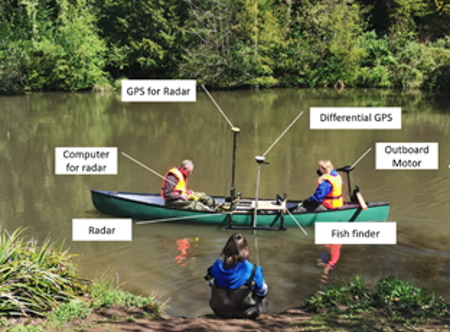 This research group (Drs Viv Heaton, Jamie Pringle, Kris Wisniewski, Charlene Greenwood & George Handley) combines expertise from both the CPS and GGE Schools within the Faculty of Natural Sciences. See staff pages for full publication lists.
This research group (Drs Viv Heaton, Jamie Pringle, Kris Wisniewski, Charlene Greenwood & George Handley) combines expertise from both the CPS and GGE Schools within the Faculty of Natural Sciences. See staff pages for full publication lists.
Drowning is the third leading cause of death by unintentional injury worldwide, accounting for approximately 360,000 fatalities each year. For many of these victims, the nature of water and its influence on the body postmortem, results in significant delays with recovery, with many missing individuals unfortunately never being located. There is a current lack of knowledge concerning the major variables that affect victim search, recovery and analysis. The group is comprised of experts in forensic science and geophysics who undertake controlled research in order to optimise search technologies and increase accuracy when determining the time of death for recovered victims. The team also consults with police forces and search personnel and assists in the review/investigation of unsolved cold cases. Project outcomes will increase detection success rates, provide more accurate estimates for time of death, and give closure to more families of the missing.
Focused on the science of aquatic search - see TheConversation article as well as body recovery, research is on the following:
Controlled aquatic geophysics research
This research looks at developing optimal strategies, workflows and protocols to detect sunken items of forensic interest including sadly drowned victims, combining the latest technological advances, including UAVs, sonar and Water Penetrating Radar. This takes advantage of Keele University Estates having numerous ponds and lakes of various dimensions to test equipment on.
Controlled aquatic decomposition research
This research aims to identify the variables that influence the decomposition and movement of cadavers submerged in water. These variables include, but are not limited to, water current/turbulent flow, salinity, the presence of any clothing or trauma, or how weights attached to a body alter the postmortem process. Controlled research is conducted at a dedicated research site and the results will allow forensic investigators to increase accuracy when estimating the time of death as well as predict the movement and position of the cadaver within the water column.
Bone Mineral Research
This research aims to investigate the physicochemical modifications to bone mineral submerged in different water conditions, with the aim to provide an accurate time of death for submerged skeletal remains. The research employs a material science approach to understand and characterise the physicochemical properties of bone and utilises technology such as micro-computed tomography (µ- CT), X-ray diffraction (XRD) and spectroscopy. This provides an insight into bone modifications from the micro to the nanoscale. The work is not limited to submerged water studies, and also considers changes to heated bone, to enhance our understanding of fire scenarios and species differentiation of compromised bone.
Active/cold case police support
Actively involved in casework for consultancy/impartial advice, search assistance or case reviews, the team have assisted on two UK cases to date.
This research group (Drs Viv Heaton, Kris Wisniewski, Jamie Pringle and George Handley) combines expertise from both the CPS and GGE Schools within the Faculty of Natural Sciences.
It is widely accepted within the forensic community that blowflies will colonise a body shortly after death, their larvae feeding on the soft tissues of the victim and contributing significantly to the decomposition process. These feeding larvae aggregate to form large larval masses, often containing thousands of individuals. As a consequence of this, the mass generates a significant amount of heat, causing localised temperatures to increase above ambient, often reaching highs of 50°C. The research group aims to investigate what variables influence the temperature of the larval mass and how this knowledge can be applied to casework. It focuses on two areas of research:
The influence of mass temperature on larval development and PMI estimates
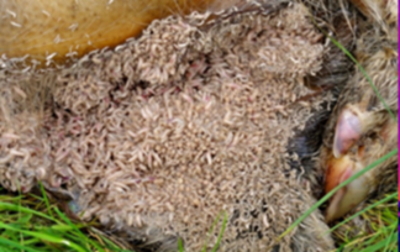 Forensic investigators are able to determine a postmortem interval (PMI) for a victim using their knowledge of larval development at various temperatures. Working under the assumption that blowfly larvae colonise a victim shortly after death, if entomologists can age the larvae collected from a corpse, then they can estimate when the victim died. Therefore, controlled research aims to identify the variables which influence heat generation in larval masses, as well as determine how this impacts larval development and any subsequent PMI estimates. Variables that may alter the amount of heat generated by a maggot mass and are currently being investigated include the size and density of the mass, species composition, presence of clothing/wrappings and environmental factors.
Forensic investigators are able to determine a postmortem interval (PMI) for a victim using their knowledge of larval development at various temperatures. Working under the assumption that blowfly larvae colonise a victim shortly after death, if entomologists can age the larvae collected from a corpse, then they can estimate when the victim died. Therefore, controlled research aims to identify the variables which influence heat generation in larval masses, as well as determine how this impacts larval development and any subsequent PMI estimates. Variables that may alter the amount of heat generated by a maggot mass and are currently being investigated include the size and density of the mass, species composition, presence of clothing/wrappings and environmental factors.
The use of thermal imaging in search and recovery
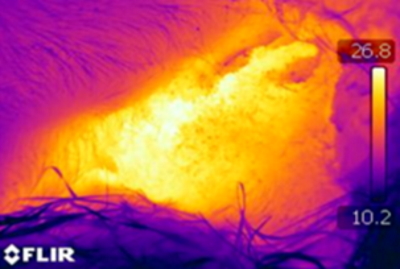 In 2019/2020 155,211 individuals were reported missing, of which 955 had a fatal outcome. In recent years search specialists have been investigating the use of thermal imaging as a tool in locating missing and deceased individuals. The research group aims to support this by undertaking a series of controlled experiments in order to
In 2019/2020 155,211 individuals were reported missing, of which 955 had a fatal outcome. In recent years search specialists have been investigating the use of thermal imaging as a tool in locating missing and deceased individuals. The research group aims to support this by undertaking a series of controlled experiments in order to
- quantify the length of time that decomposing remains can be detected and determine the optimal time of day for use of thermal imaging, and
- determine the major site variables that may affect such surveys (e.g. depositional environments, vegetation cover, soil type, body wrapping, etc.).
The results of the research can then be applied to casework, allowing the search teams to identify when thermal imaging surveys are most suited to a case, reduce search times, and increase success rates at locating individuals.
This research involves investigating three factors of dental anthropology: childhood stress identification, pathological impacts on hard tissue development, and dental diagenesis/taphonomy. The overall aim of the combined research is to both improve existing methods of dental analysis in forensic and bioarchaeological contexts, as well as develop new techniques for use within existing biological profiling procedures. This is being conducted using a mixture of research techniques including histology and microscopy, XRF, SEM/EDX, and XRD, to allow macroscopic, microscopic, and elemental levels of investigation.
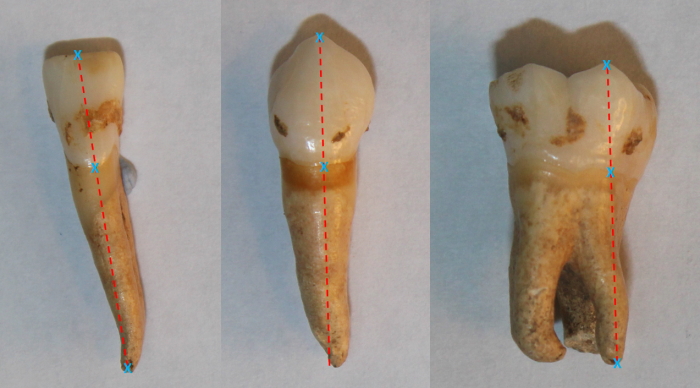
Stress identification
Both physiological and psychological stress can be reflected in teeth. In enamel this occurs where stressful incidents interrupt its regular incremental developmental patterns while still in the jaw. In dentine this occurs where stress prevents it from properly mineralising while dental roots are growing. Research investigating this in the SCPS aims to better quantify the identification and analysis of the manifestations of stress in childhood which is reflected in teeth, in order to help better inform biological profiling in forensic contexts. This is being conducted using both historic and contemporary human dental remains spanning the last 2000 years of British history.
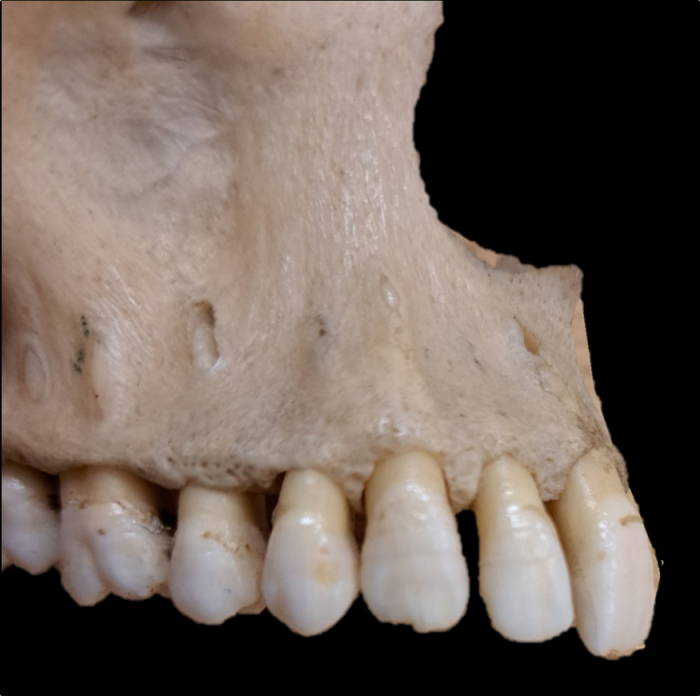
Pathological impacts
Disease and other pathologies can easily be identified on bone, however the analysis of non-specific dental diseases (i.e. those only developing on teeth) and their impacts on dental morphology is limited. Research in the SCPS aims to identify diagnostic characteristics of diseases that can afflict the whole or other parts of the skeleton which can be identified through dental analysis - currently this includes analysis of remains presenting with leprosy, scaphocephaly, rickets, and sudden infant death syndrome (SIDS). The aim of this line of research is to help improve the level of biological profiling which can be conducted with fragmented/incomplete remains in both bioarchaeology and forensic anthropology.
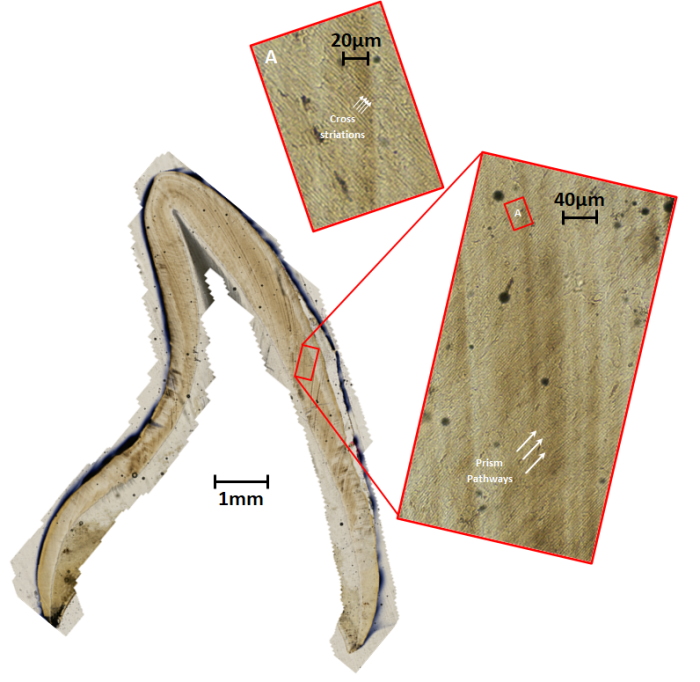
Dental taphonomy
Taphonomy is popular area of research which aims to improve our understanding of decomposition, with an eye to helping identify victims and post-mortem intervals (PMIs). While bone and soft tissue analysis in common within taphonomy, dental analysis is far more limited. The research being conducted at Keele aims to develop multiple techniques for dental taphonomic analysis, investigating how teeth breakdown in forensic contexts over time at more the surface, interior, and microscopic levels.


